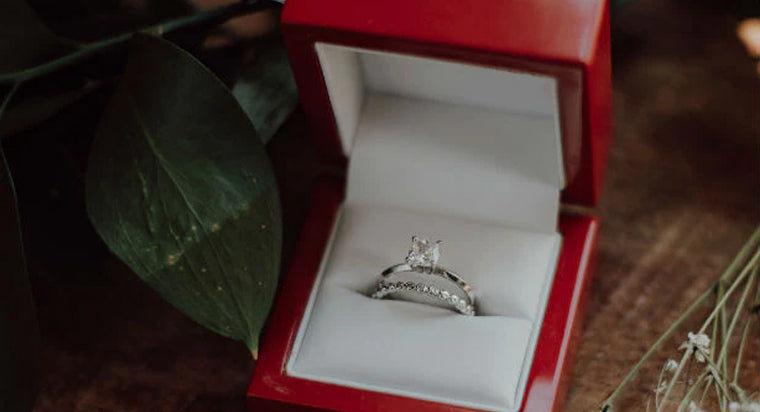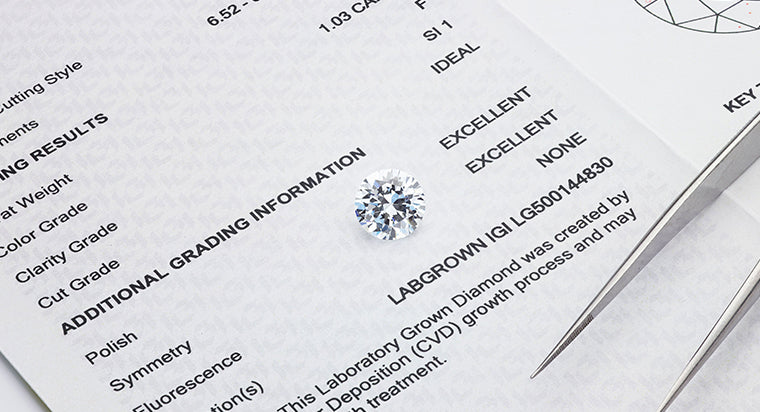Everything to Know About HRD Certification

If you've ever been shopping for diamonds or diamond jewelry, you may have noticed that some have, aside from a simple certificate of authenticity, official reports and certification documents from various gemological organizations. IGI and GIA are among the most often certifications issued and seen; however, there are others that classify and grade diamonds according to a strict set of regulations and factors. One example is the HRD certification.
TABLE OF CONTENTS
What is an HRD Certification?
The HRD (Hoge Raad voor Diamant) certification, was founded in the early 1970's. This certification, unlike the GIA (Gemological Institute of America), and the IG (the International Gemological Institute) issues certificates of authenticity, quality and grade scale placement for diamonds located almost solely in Europe. The HRD is considered the main authority of all things related to diamonds throughout all European countries. The overall purpose of an HRD certification is the same as the GIA and IGI certifications: to accurately examine and assess diamonds, and assign them proper ratings and grades according to quality charts and lists the HRD has created.
What Scale Does the HRD Use for Grading? How Does it Work?
The HRD grades and certifies diamonds in much the same way that the GIA and the IGI do. They rely on characteristics of diamonds, such as the 4 C's (color, clarity, carat, and cut) to determine where on its scale each diamond belongs, and the grade it receives. Diamonds that reach or surpass a certain grade are considered of high enough quality to receive an official certification. Those that rank too low to meet each of the HRD's standards are denied certification.
Not every diamond that doesn't make the grade is just tossed aside as “worthless.” In many cases, they are distributed to collectors, other organizations for further testing, or to jewelry retailers. Most of these diamonds are still of decent enough quality to be sold in jewelry stores, as long as they maintain an adequate record of their flaws and characteristic grades, and priced accordingly.

HRD Grade and Certification
Like the other gemological organizations, the HRD bases its grade and certification issuances not only on the 4 C's, but also on a diamond's finish (polish), symmetry, light reflection, proportion, and the overall beauty of the gem. These qualities are rated on a scale, from “Excellent,” to “Fair,” with “Fair” being the lowest classification possible by HRD standards.
In regards to three of the 4 C's, the HRD grades them thusly:
- Color- D-Z
- Clarity: LC (Loupe-clean)- P3 (Piqué (or Included) 3)
- Carat: weight of the diamond (usually in relation to the size)
What do HRD Diamond Grading Reports Include?
The primary information found in HRD certification reports relates to the 4 C's of each diamond. The HRD outlines the qualities of the diamond as they observed and eventually graded, and gives brief explanations for their findings. However, the HRD tries to be all-inclusive in its reporting, and add details for which they do not specifically test or assess. Reports for treated diamonds may be included with their notes, as well as any laser inscriptions found, re-polished diamonds they encounter as they study the gems, and reports on diamonds grown and formed in labs. Occasionally, the HRD will incorporate notes taken during the initial exams done on each diamond or group of diamonds.
How Popular is HRD in the US?
Because it primarily serves and grades diamonds and gemstones in Europe, with its headquarters located in Belgium, the HRD certification holds little rep in the United States. Most jewelry professionals and institutions in America do not consider the HRD certification or standards to be adequate substitution for the country's own official certificates and classification (i.e., from the GIA), or professional reports from international organizations, such as the IGI.
While an HRD certification is hard to come by, and carries little weight, in the United States, a diamond shopper/customer in Europe might want an HRD certified diamond as proof that the diamond is worth the money spent, and documented information on the value increase (if any) of the diamond over time. An HRD is also proof of a diamond's authenticity, so if the consumer ever needed to prove that the diamond was real, the HRD certificate should be more than adequate evidence.
What is the Difference Between Getting an HRD Certification and an AGS Certification?
One of the biggest differences between the HRD and AGS (American Gem Society) is that, unlike the HRD, the AGS has little authority in Europe. However, diamonds distributed from European countries may land in the hands of the AGS at some point, because they are renowned as one of the top diamond grading organizations in the country.
Like the HRD, the AGS grades on the 4 C's. They additionally grade diamonds based on diamond table (the top surface of the gem) percentage, as well as diamond width and percentage of depth in each diamond.







